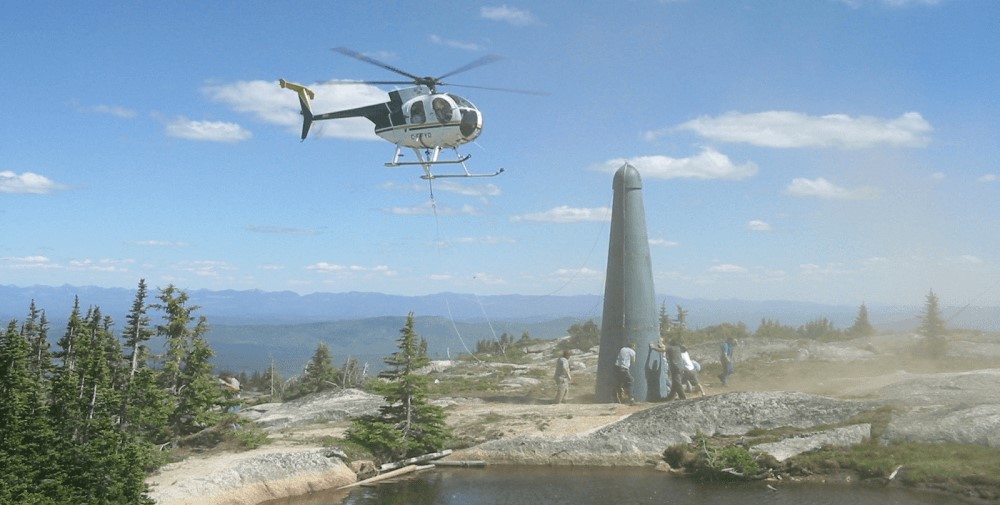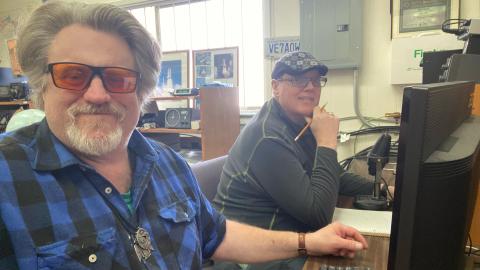Congratulations to the hikers who made our Canada Day trek to Little White a success. In the hiking group photo are Chris VE7EQN, Gary VE7OH, Bill VE7VBI, Sandra, Anton VE7NRT, Bob VA7MF, Mike VE7KPZ, Polonia VA7POL and Ivan VA7NOS. Not pictured is our intrepid trail guide Gary VE7GCP and Bob VA7RGM.
The hike started at the Black Mountain CANCO at 7:00AM. From there it was an easy 32K drive to McCullough Road where we entered the forest service road network. We took the sometimes rough and dusty forest service roads to the trail head parking area where Mike had set up his Unimog. Mike made the drive up the evening before and camped out overnight. After some organization, the hikers started up the 3 km trail with a 1200-foot elevation change to the Little White summit. In addition to their own supplies, the hikers carried the equipment necessary to complete the installation and repair work at the repeater site. In that regard, a special thanks to Sandra, who single-handedly carried the two solar panels all the way to the top.
On arrival at the summit, the work party got going on the tasks for the day. The installation of two new solar panels, the repair of a crack in the fiberglass shell and measurements for the fabrication and replacement of the main solar panels.
Mike (VE7KPZ) activated the Little White summit for both Parks on the Air (POTA) and Summits on the air (SOTA). Mike made more than enough qualifying contacts to get activations for both programs. He worked simplex on 146.520, using the clear line of sight at the top to make his VHF contacts. He then used HF to make a number of FT8 contacts on 20 meters.
While cooler at the summit than the 34C temperature in Kelowna, it was still hot when out of the shade. Unfortunately, clouds of bugs also sought out the shade at the top. Thankfully, we had enough bug spray to keep most (but not all) of them at bay.
By late afternoon, the tasks were complete and after taking the group's Canada Day photo, the hiking crew headed back down. All in all, it was a challenging but successful hike to a much-sought-after destination in the Central Okanagan. The Com shell got its new solar panels, a fiberglass repair, and measurements were taken and, of course, Mike documented the trip with successful activations on both POTA and SOTA.
Supporting our hikers were the many members of OCARC who took the time to monitor the Little White Repeater for reports on the progress up and down the mountain. Thank you for your contribution.
And, of course, a special thanks to the hiking crew who showed us all that it could be done.
All in all a unique and successful Canada Day event on behalf of OCARC.
Photos are courtesy of Gary VE7OH. Other members have taken photos also.
There were over 150 hours of volunteer work for this project.










